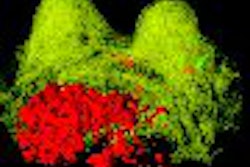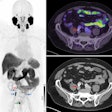Dear Molecular Imaging Insider,
The 2007 Joint Molecular Imaging Conference is under way in Providence, RI, and AuntMinnie.com is on hand to provide coverage of the four-day forum.
Co-sponsored by the Academy of Molecular Imaging (AMI) and the Society for Molecular Imaging (SMI), this year's event includes 929 abstracts. Oncology imaging tops the research list with 151 abstracts, followed by quantitation of molecular imaging with 73 papers.
In this edition of the Molecular Imaging Insider, read how a group of private and academic researchers is developing a prototype MRI/SPECT system for preclinical and clinical applications. It is admittedly in its early stages, but the possibilities for future use are intriguing. To learn more, click here.
In other news, FDG-PET can become a powerful tool for the differential diagnosis and management of patients with dementia and mild cognitive impairment. Read the details of a study from Kettering Medical Center and Wright State University that found FDG-PET to have the potential to increase diagnostic confidence, confirm diagnoses, and help caregivers and patients chart the appropriate treatment plan.
Also in the Molecular Imaging Digital Community is a report on how PET/CT has a high sensitivity rate in initial staging and recurrence assessment of soft-tissue sarcoma. Studies from Canada and the U.S. also note strong concordance between the two modalities in evaluating sarcoma lesions.
In addition, staff writer Shalmali Pal reports on a study that found breast-specific gamma imaging (BSGI) outperforms mammography and MRI for detecting ductal carcinoma in situ (DCIS), achieving a higher sensitivity rate. The results from George Washington University's research follow an MR study that determined the modality particularly adept at pinpointing DCIS in high-risk women.
In other features, caregivers at the Children's Hospital of Philadelphia are raving about PET's accuracy in locating focal lesions in the pancreas of newborns. The abnormalities cause congenital hyperinsulinism -- the most common cause of hypoglycemia in infants and children -- which, in turn, damages insulin-secreting beta cells. Left untreated, the condition can result in brain damage and possibly death.
With PET's help in detection and location, surgeons can remove the lesions and cure the newborns. Read more in this report about the program that is receiving worldwide attention.
Be sure to check the Molecular Imaging Digital Community in the coming days, as coverage of the 2007 AMI/SMI annual conference continues.




















